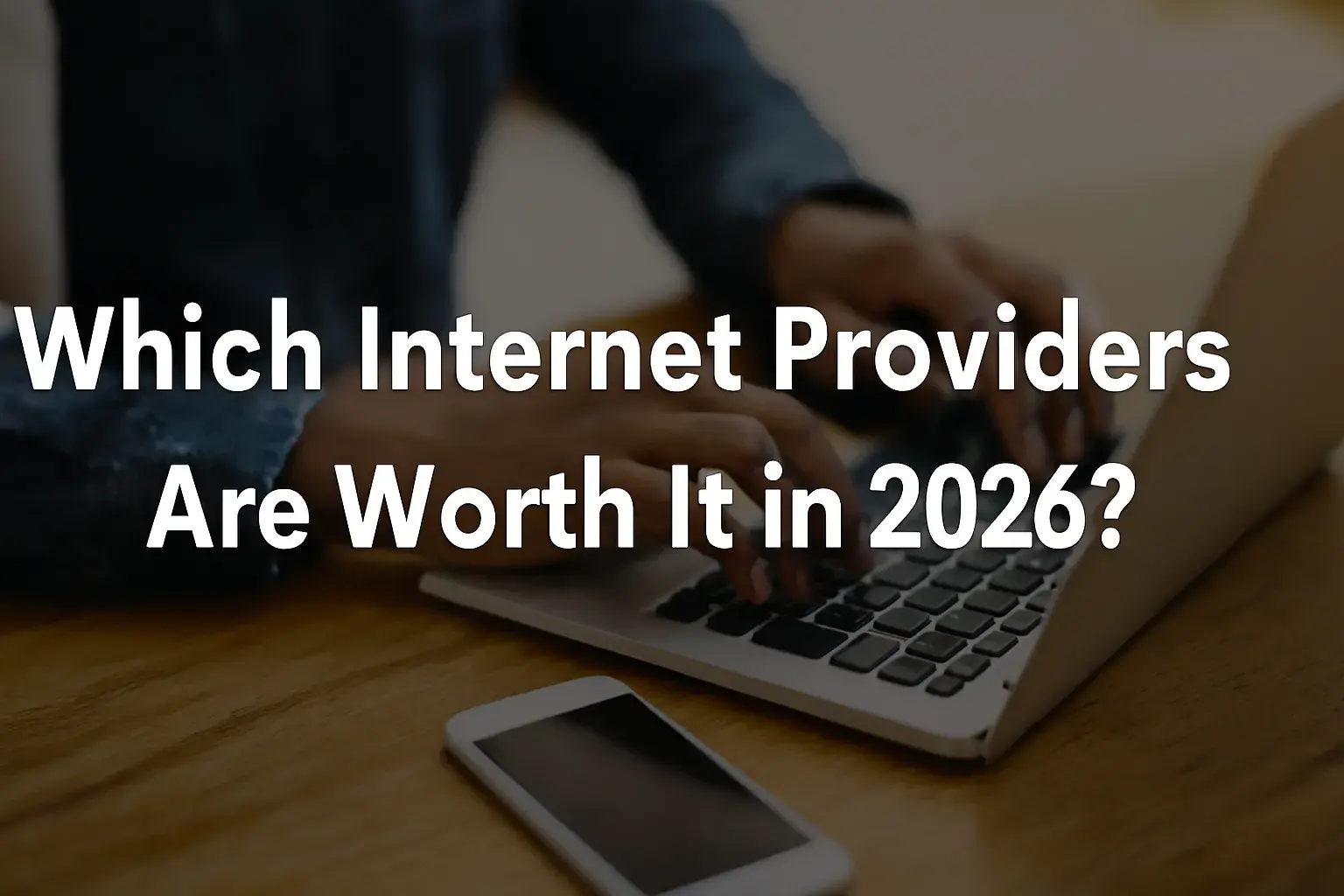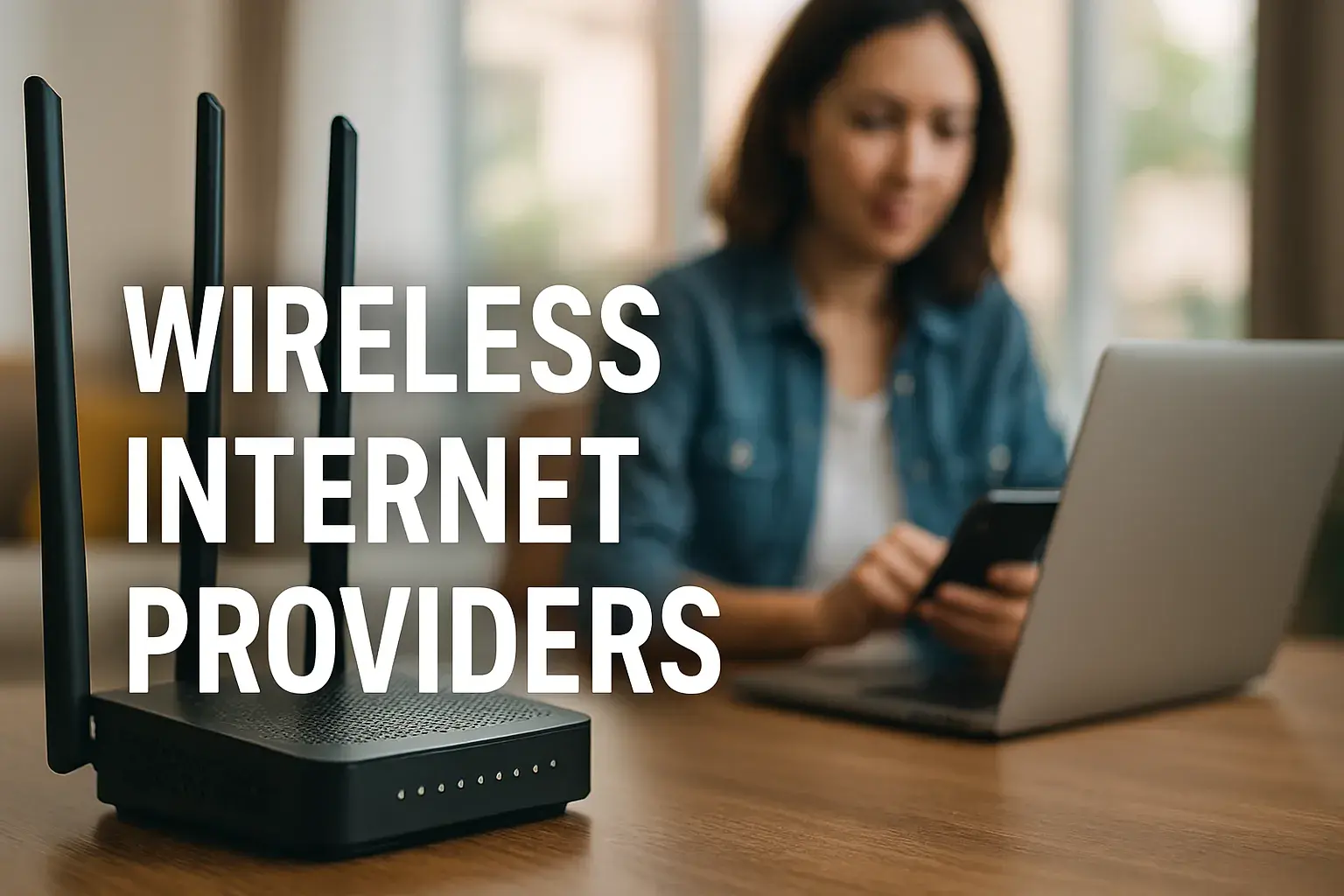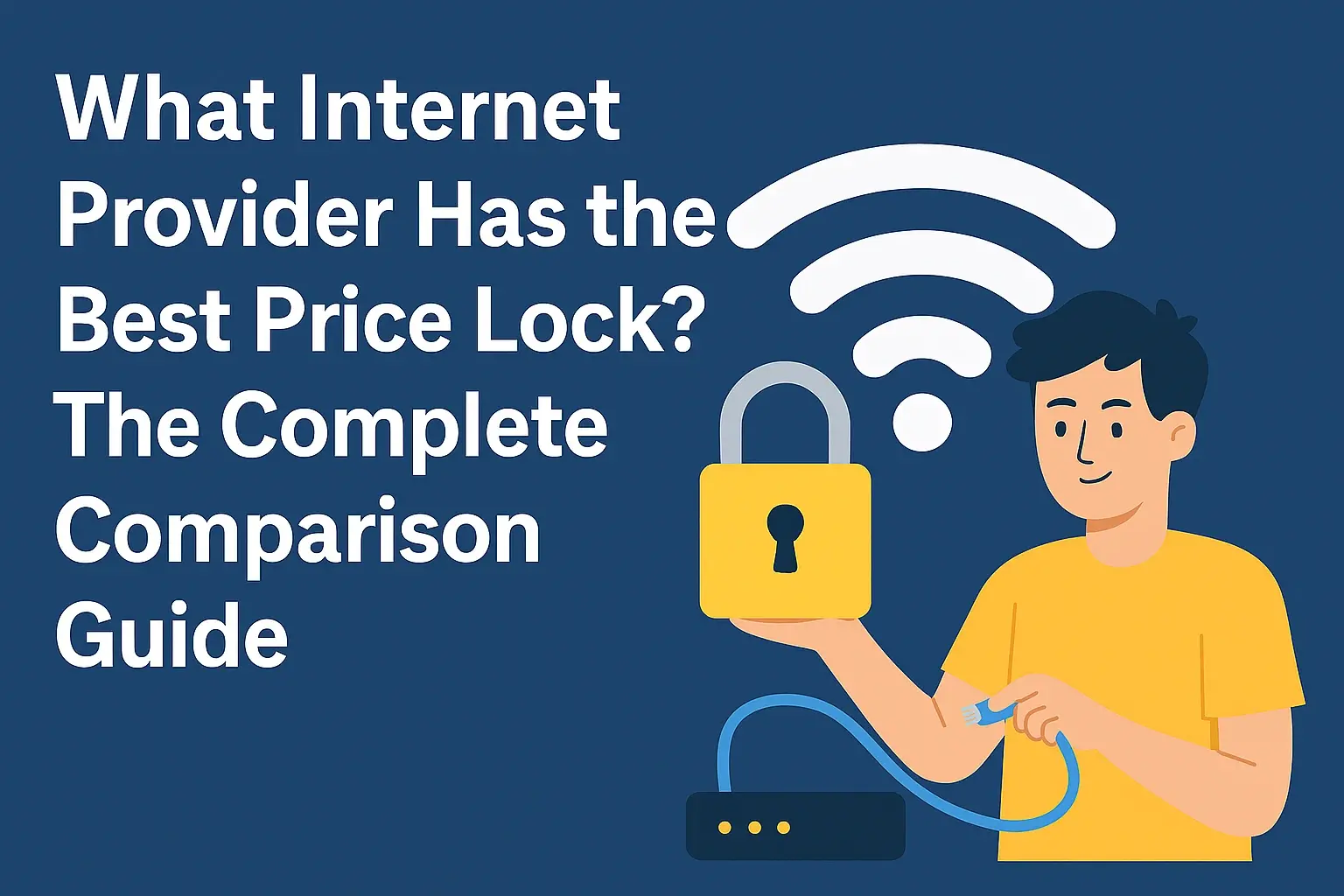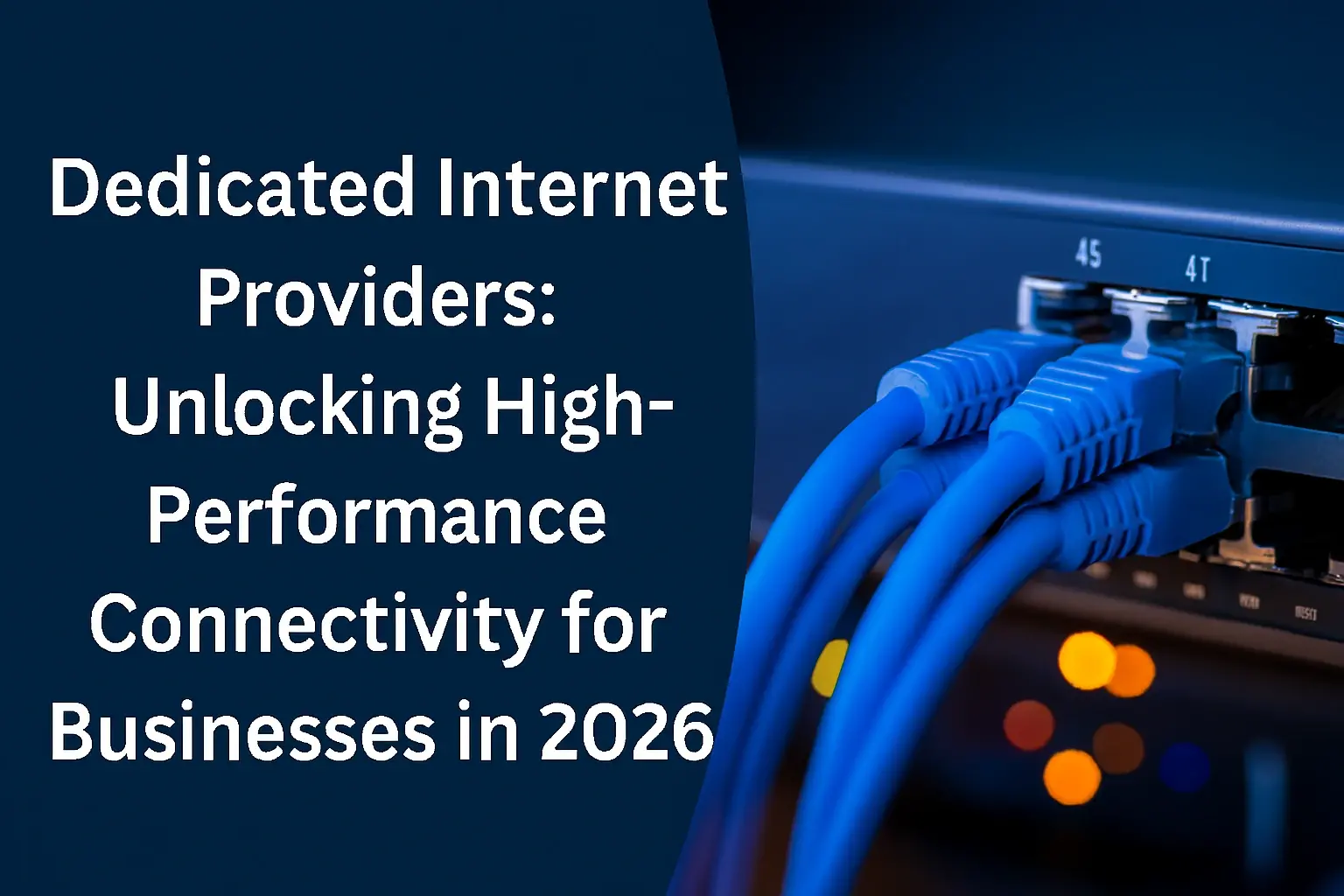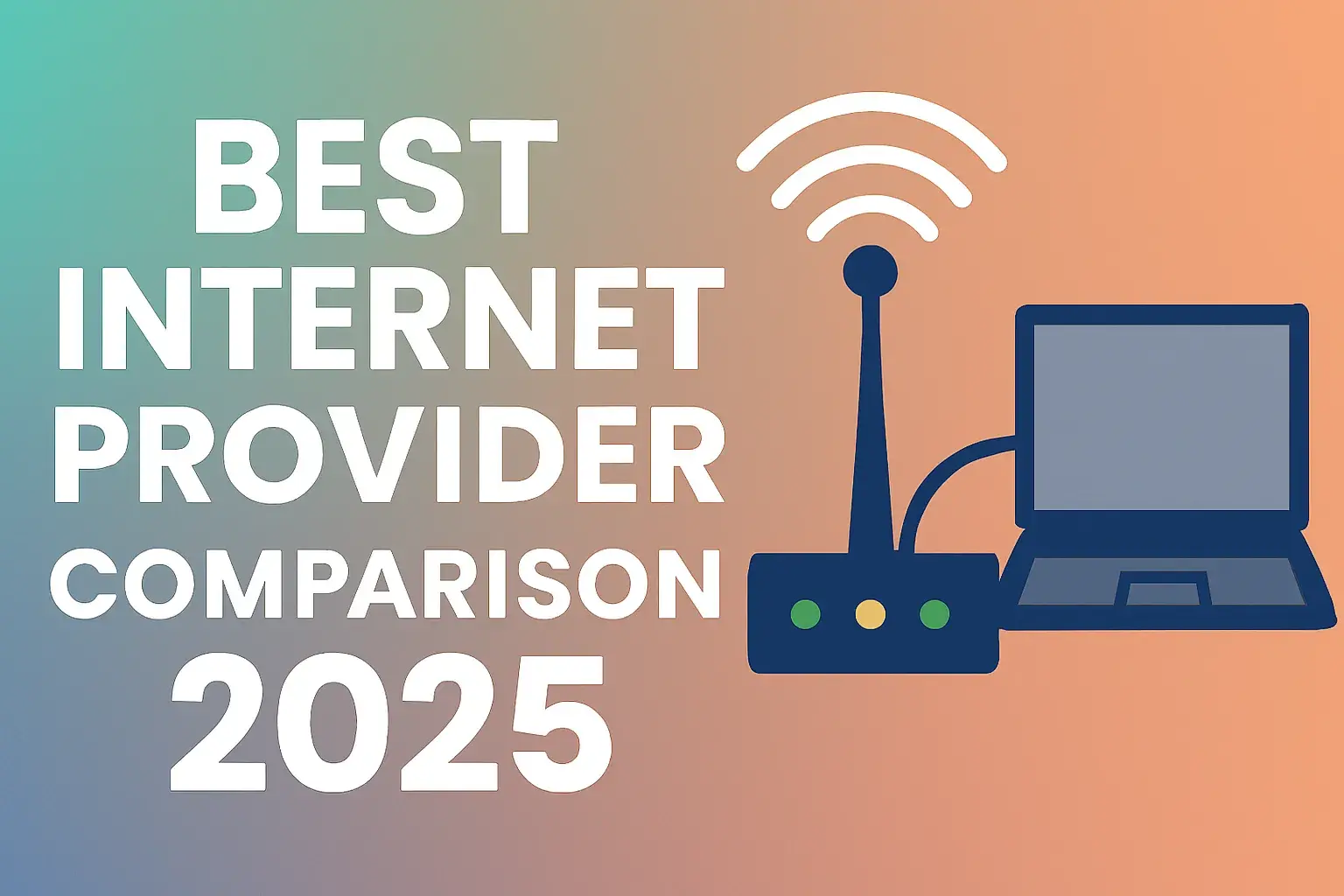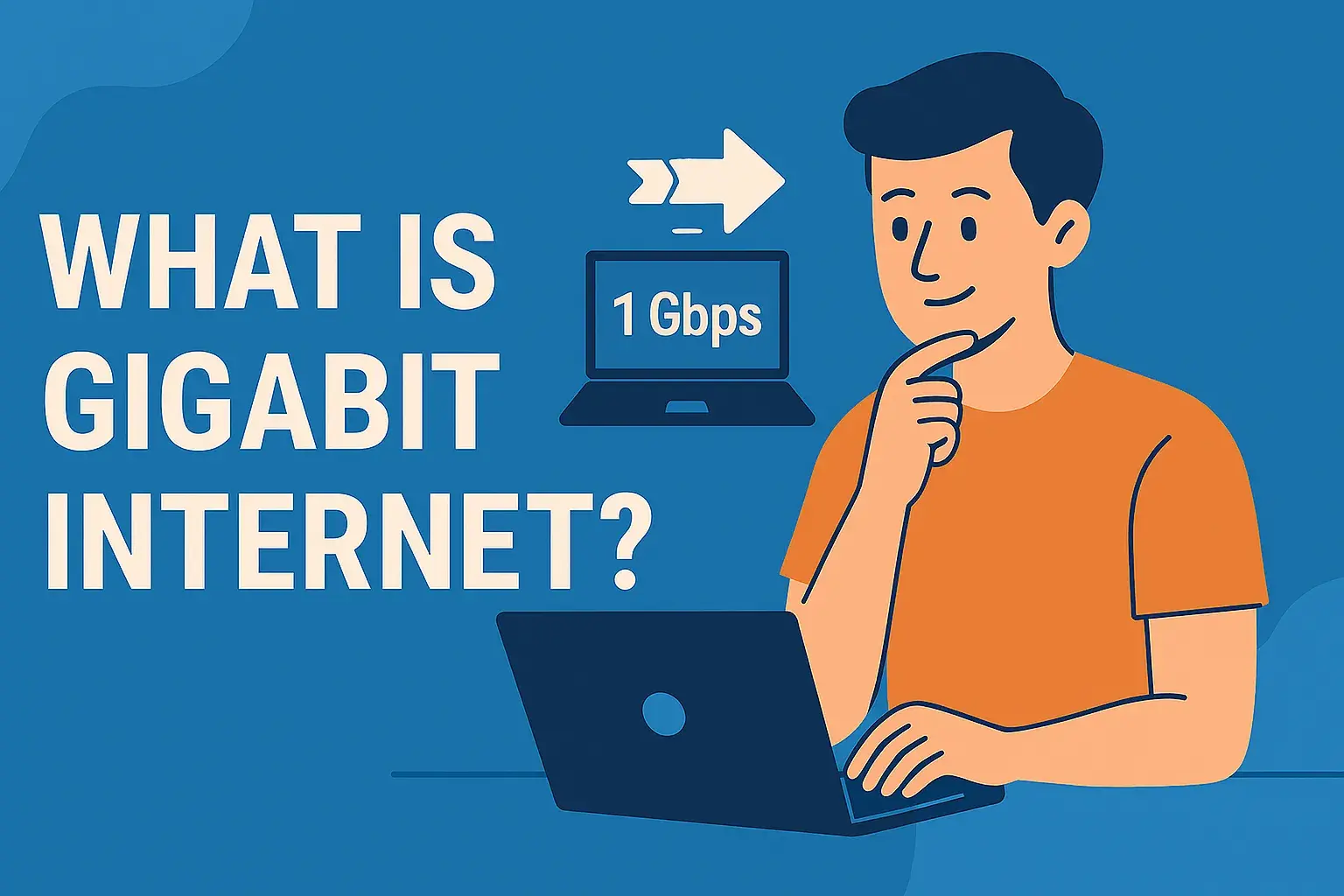
Introduction to Gigabit Internet
In 2025, the internet is more integral to daily life than ever, powering everything from remote work to 4K streaming and online gaming. As our digital demands grow, gigabit internet has emerged as a leading solution, offering speeds up to 1 gigabit per second (Gbps). This ultra-fast connectivity is transforming how we live, work, and play online. But what exactly is gigabit internet, and is it right for you? This comprehensive guide explores its definition, technology, benefits, who needs it, and the latest developments shaping its adoption in 2025. Whether you're a tech enthusiast or simply looking to upgrade your internet, this guide will help you make an informed decision.
What is Gigabit Internet?
Gigabit internet refers to broadband service delivering speeds of 1 Gbps, or 1,000 megabits per second (Mbps). To put this in perspective, standard broadband typically ranges from 10 to 100 Mbps, making gigabit internet 10 to 100 times faster. This speed allows for near-instantaneous downloads, seamless streaming, and lag-free online experiences. For example, a high-definition movie that might take 30 minutes to download on a 25 Mbps connection can be downloaded in under a minute with gigabit internet.
Key Features of Gigabit Internet
-
Speed: Download and upload speeds up to 1 Gbps, enabling rapid data transfer.
-
Reliability: Primarily uses fiber-optic technology, which is less prone to interference than copper cables.
-
Capacity: Supports multiple devices and users simultaneously without performance drops.
-
Low Latency: Offers minimal delay, crucial for real-time applications like gaming and video calls.
How Does Gigabit Internet Work?
Gigabit internet relies on advanced infrastructure, most commonly fiber-optic networks. Unlike traditional copper cables, fiber-optic cables transmit data as light pulses through thin glass or plastic strands. This allows for higher bandwidth, faster speeds, and greater reliability over long distances. Some providers also deliver gigabit speeds via advanced cable technologies, such as DOCSIS 3.1, over coaxial networks.
Types of Gigabit Internet Connections
-
Fiber-to-the-Premises (FTTP): Fiber cables run directly to your home, offering the fastest and most reliable connection. Providers like AT&T Fiber and Google Fiber use FTTP.
-
Fiber-to-the-Node (FTTN): Fiber reaches a neighborhood node, with copper cables connecting to homes. This is less common for gigabit speeds but still viable.
-
Cable Internet: Providers like Spectrum and Xfinity use coaxial cables to deliver gigabit speeds, leveraging technologies like DOCSIS 3.1.
Benefits of Gigabit Internet
Gigabit internet offers significant advantages, making it a compelling choice for many users:
1. Unmatched Speed
With speeds up to 1 Gbps, gigabit internet drastically reduces download and upload times. For instance, a 90GB game that might take hours on a 100 Mbps connection can be downloaded in about 12 minutes with gigabit internet, assuming optimal conditions.
2. Multi-Device Support
Modern households often have numerous devices connected simultaneously—smartphones, tablets, smart TVs, and IoT devices like smart thermostats. Gigabit internet ensures all devices operate smoothly without bandwidth competition.
3. Low Latency
Low latency (typically 5–20 milliseconds) is critical for activities like online gaming, where split-second responses matter, and video conferencing, where delays can disrupt communication. Gigabit internet minimizes lag, enhancing user experience.
4. Future-Proofing
As technologies like virtual reality (VR), augmented reality (AR), and 8K streaming become more common, bandwidth demands will increase. Gigabit internet prepares you for these advancements, ensuring your connection remains relevant.
Who Needs Gigabit Internet?
While gigabit internet is powerful, it’s not essential for everyone. Here’s who might benefit most:
1. Large Households
Homes with multiple users streaming, gaming, or working simultaneously can strain slower connections. Gigabit internet ensures everyone enjoys fast, reliable service.
2. Heavy Internet Users
Professionals like software developers, graphic designers, or videographers who handle large files benefit from rapid download and upload speeds.
3. Gamers
Competitive gamers need low latency to stay competitive. Gigabit internet provides the responsiveness required for fast-paced games.
4. Content Creators
Those uploading high-resolution videos or large datasets to platforms like YouTube or cloud services save significant time with gigabit upload speeds.
5. Remote Workers
With remote work on the rise, gigabit internet supports seamless video conferencing, file sharing, and access to cloud-based tools.
For lighter users—those who primarily browse the web, check emails, or stream on one device—speeds of 100–500 Mbps may suffice, often at a lower cost.
How to Get Gigabit Internet
Getting gigabit internet involves a few straightforward steps:
-
Check Availability: Use your ISP’s online tool to verify if gigabit internet is available at your address. Availability depends on local infrastructure, particularly fiber-optic networks.
-
Choose a Plan: Select a plan that fits your needs and budget. Compare speeds, pricing, and features like equipment or data caps.
-
Schedule Installation: A technician may need to install fiber-optic lines or upgrade existing connections.
-
Set Up Equipment: Ensure you have a modem and router capable of handling gigabit speeds. Many ISPs provide these, but you can purchase your own for potential savings.
Top Gigabit Internet Providers in 2025
Several providers offer gigabit internet, each with unique features and availability:
|
Provider |
Speeds |
Price (/mo) |
Features |
Availability |
|---|---|---|---|---|
|
AT&T Fiber |
Up to 5 Gbps |
$55–$225 |
No contract, free equipment, no data caps |
Urban and suburban areas |
|
Verizon Fios |
Up to 940 Mbps |
$89.99 |
Symmetrical speeds, no data caps |
Northeast, Mid-Atlantic regions |
|
Google Fiber |
1–2 Gbps |
$70–$100 |
Free router, installation, no data caps |
Select U.S. cities |
|
T-Mobile Home Internet |
Up to 1 Gbps |
$35–$55 |
5G-based, no contract, unlimited data |
Expanding across U.S. |
|
Spectrum |
Up to 1 Gbps |
$60–$80 |
No data caps, free modem |
Nationwide, select areas for gigabit |
-
AT&T Fiber: Offers multi-gigabit plans up to 5 Gbps, ideal for heavy users. Known for excellent customer service. Check availability.
-
Verizon Fios: Provides near-gigabit speeds with symmetrical upload/download, perfect for video calls and uploads. Explore plans.
-
Google Fiber: Offers 1–2 Gbps plans with straightforward pricing and free installation. Learn more.
-
T-Mobile Home Internet: Leverages 5G for gigabit speeds in select areas, with no annual contract. Check coverage.
-
Spectrum: Delivers gigabit speeds via cable in many areas, with no data caps. View plans.
Latest Developments in Gigabit Internet (2025)
Gigabit internet is rapidly expanding, driven by technological advancements and government initiatives:
-
Project Gigabit in the UK: As of January 2025, 81% of UK homes have access to gigabit broadband, up from 6% in 2019. The government aims for 85% coverage by 2025, with over £1.3 billion invested in 31 contracts covering 370,000+ premises (GOV.UK).
-
NBN Co in Australia: Plans to launch 2 Gbps plans in September 2025 for FTTP and HFC customers, introducing “hyper-fast” residential and business products (NBN Co).
-
Starlink: Set to offer gigabit satellite internet in 2026 with V3 satellites, providing 10x the bandwidth of current V2 satellites (NotebookCheck).
-
EU Gigabit Infrastructure Act: Effective from November 2025, this act simplifies and reduces costs for gigabit network deployment across the EU (European Commission).
-
Market Growth: The global gigabit internet market is projected to grow at a 20% CAGR from 2025 to 2033, fueled by demand for high-bandwidth services and fiber infrastructure expansion (DataInsightsMarket).
Internet Speed Statistics (2025)
-
Global Internet Users: Approximately 5.35 billion people, or 66% of the global population, are online, with projections of 7.9 billion by 2029 (Statista).
-
UK Gigabit Coverage: 81% of UK homes had gigabit access by January 2025, with Northern Ireland at 94% and Wales at 74% (Computer Weekly).
-
Global Average Speeds: As of September 2021, global fixed broadband averaged 113.25 Mbps; by 2025, gigabit speeds are becoming more common (World Population Review).
-
Fastest Countries: In August 2024, the UAE led with 297.62 Mbps, followed by Singapore at 297.57 Mbps (Statista).
-
US Internet Usage: 93% of U.S. adults use the internet, with 85% having home broadband in 2024 (Pew Research).
-
IoT Growth: Over 75 billion IoT devices are expected worldwide by 2025, many relying on gigabit speeds (DataProt).
FAQs about Gigabit Internet
Q: Is gigabit internet worth the extra cost?
A: For large households, gamers, content creators, or remote workers, gigabit internet’s speed and reliability are valuable. However, for basic browsing or single-device streaming, 100–500 Mbps may be more cost-effective.
Q: Can I get gigabit internet everywhere?
A: Availability depends on local infrastructure, particularly fiber-optic networks. Coverage is expanding, with 81% of UK homes and growing U.S. regions accessing gigabit speeds in 2025. Check with providers like AT&T or Verizon.
Q: What’s the difference between download and upload speeds?
A: Download speed affects how fast you receive data (e.g., streaming), while upload speed impacts sending data (e.g., video calls). Gigabit internet often offers symmetrical speeds for balanced performance.
Q: Do I need special equipment for gigabit internet?
A: Yes, a gigabit-capable modem and router are required. Many ISPs provide these, but you can buy your own for potential savings.
Q: How does gigabit internet compare to 5G home internet?
A: Gigabit internet, typically fiber-based, offers stable, high-capacity connections. 5G home internet, being wireless, may face congestion or signal issues but is expanding gigabit access in areas without fiber.
Conclusion
Gigabit internet is redefining connectivity in 2025, offering speeds up to 1 Gbps that support seamless streaming, gaming, and remote work. With global adoption growing—81% in the UK, expanding U.S. coverage, and a projected 20% CAGR through 2033—gigabit internet is becoming more accessible. Initiatives like Project Gigabit, NBN Co’s multi-gigabit plans, and Starlink’s 2026 satellite rollout highlight its bright future. For those needing high bandwidth and low latency, gigabit internet is a game-changer. Check availability in your area to see if it’s the right fit for your digital lifestyle.
